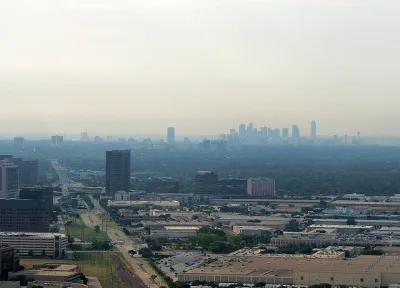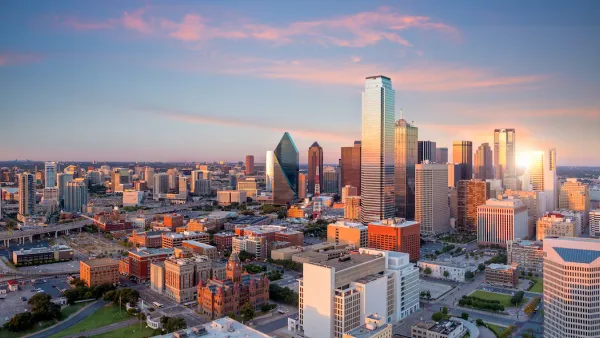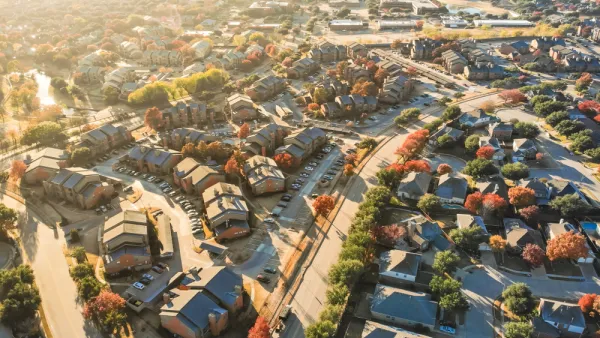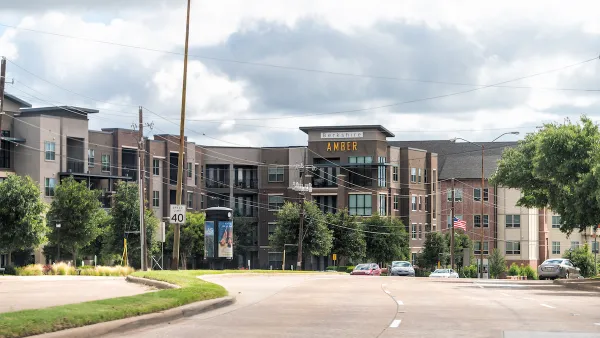Communities in south and west Dallas are working to introduce zoning reform that would reduce industrial pollution and hold companies accountable for their impacts on surrounding neighborhoods.

Patrick Sisson profiles the residents fighting to clean up the communities of southern and western Dallas. "Ringed by highways and dense with cement plants, warehouses, factories and landfills, these once-rural tracts of land are now the most contaminated in the city."
To fight polluters, residents, environmental activists and public health advocates have had to take on another powerful, mostly invisible foe: the zoning regulations that forced Black and brown communities on the wrong side of I-30 and the Trinity River to bear the brunt of industrial pollution.
Now, local activists are looking for ways to use zoning to their advantage. "'Zoning has been a tool to weaponize land against communities of color, and now communities of color are saying, wait, this is a tool we can use to restore our neighborhoods,' says Collin Yarbrough, a local activist and author of Paved A Way: Infrastructure, Policy and Racism in an American City, which explores Dallas’s legacy of economic segregation."
These efforts have gotten attention at City Hall, too. "In August 2021 the city launched Forward Dallas, an effort to reform future land use in the city. Citing the need to 'reevaluate existing land use policies and adopt new, more equitable and sustainable strategies,' the city’s rezoning initiative promises to acknowledge the systemic failures and injustices that drew its zoning map, and fix them."
The article points out that "The history of zoning and environmental injustice intersects with property values and the long history of redlining. The least expensive neighborhoods, those with fewer resources and support, tend to be where lower-income residents and communities of color can set down roots, as well as where highways and polluting industries are directed." Advocates are using science-based evidence to push for zoning reform that would regulate industrial uses to protect vulnerable neighborhoods.
According to Dallas director of planning and urban design Julia Ryan, "the planning department is reaching out to neighborhood groups and hopes to have a draft plan by the middle of next year." Ryan "intends to study the plans developed by different neighborhoods, establish land use policies that include buffers for certain uses, and 'look at areas from an environmental justice standpoint and follow up with recommendations for zoning changes.'"
FULL STORY: In Dallas, the Toxic Legacy of Zoning Lingers

Analysis: Cybertruck Fatality Rate Far Exceeds That of Ford Pinto
The Tesla Cybertruck was recalled seven times last year.

National Parks Layoffs Will Cause Communities to Lose Billions
Thousands of essential park workers were laid off this week, just before the busy spring break season.

Retro-silient?: America’s First “Eco-burb,” The Woodlands Turns 50
A master-planned community north of Houston offers lessons on green infrastructure and resilient design, but falls short of its founder’s lofty affordability and walkability goals.

Test News Post 1
This is a summary

Analysis: Cybertruck Fatality Rate Far Exceeds That of Ford Pinto
The Tesla Cybertruck was recalled seven times last year.

Test News Headline 46
Test for the image on the front page.
Urban Design for Planners 1: Software Tools
This six-course series explores essential urban design concepts using open source software and equips planners with the tools they need to participate fully in the urban design process.
Planning for Universal Design
Learn the tools for implementing Universal Design in planning regulations.
EMC Planning Group, Inc.
Planetizen
Planetizen
Mpact (formerly Rail~Volution)
Great Falls Development Authority, Inc.
HUDs Office of Policy Development and Research
NYU Wagner Graduate School of Public Service




























